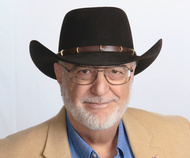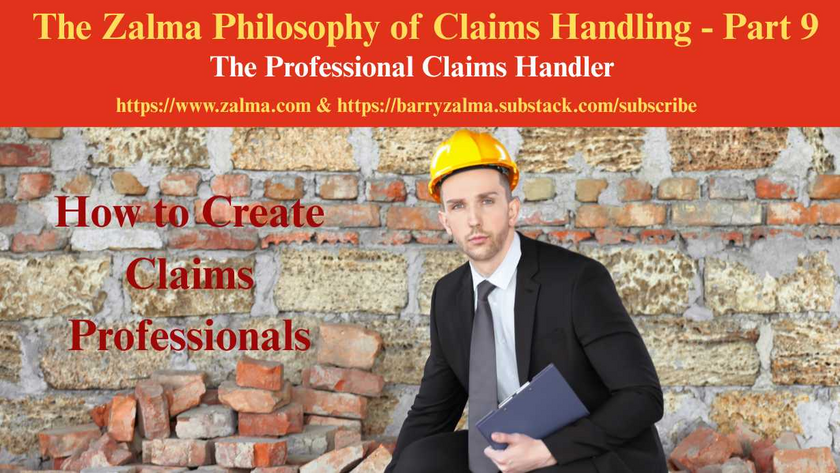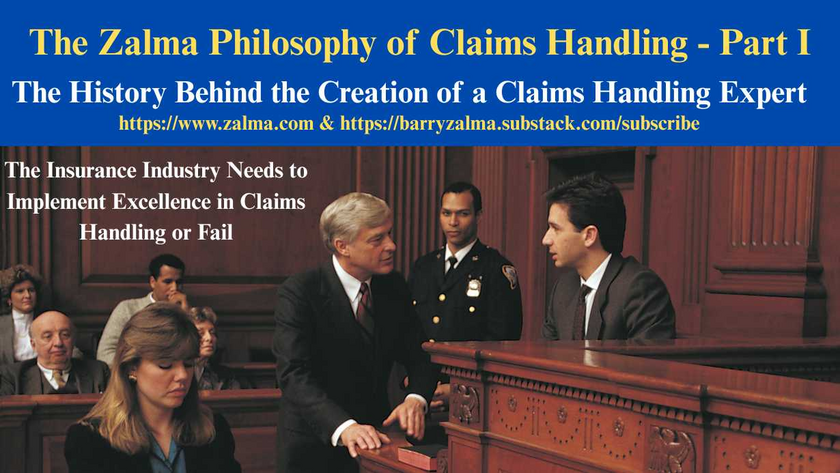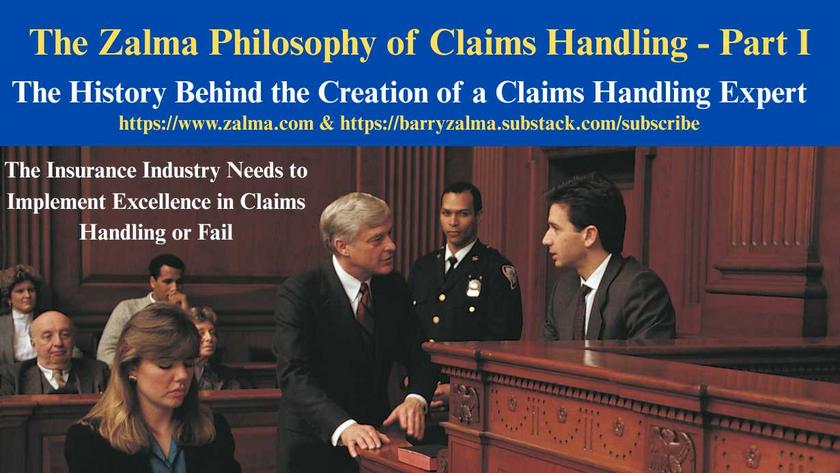
Read the full article at https://www.linkedin.com/pulse/injured-while-abating-asbestos-clearly-excluded-zalma-esq-cfe and at https://zalma.com/blog plus more than 4050 posts.
Injured While Abating Asbestos Clearly Excluded
Posted on January 18, 2022 by Barry Zalma
After a fire on one of its refineries injured two workers, killing one of them, appellant Motiva Enterprises LLC (Motiva) sought insurance coverage from the companies that insured the contractor that employed the workers. In Motiva Enterprises LLC v. National Fire & Marine Insurance Company, Axis Surplus Insurance Company et al., Maxum Indemnity Company, A159229, A159231, A159233, California Court of Appeals, First District, First Division (January 10, 2022) the Court of Appeal resolved the dispute.
The trial court concluded on summary judgment that because the workers had been abating asbestos, the relevant policies’ asbestos exclusions barred coverage. The Court of Appeal was asked to find coverage for Motiva.
FACTUAL BACKGROUND
Motiva is one of the world’s largest gasoline and diesel fuel refiners and suppliers and owns and operates the largest refinery in North America, located in Port Arthur, Texas. Under an agreement dated December 1, 2015, Motiva hired Excel Modular Scaffold and Leasing Corp. (Excel) to abate asbestos at the Port Arthur refinery. The agreement incorporated a broader “Framework Agreement.” Under the Framework Agreement, Motiva was to enroll Excel in its “Rolling Contractor Insurance Program.”
Excel also purchased insurance policies from AXIS Surplus Insurance Company (AXIS), Endurance American Specialty Insurance Company (Endurance), Maxum Indemnity Company (Maxum), and National Fire & Marine Insurance Company (National Fire). Each policy contained exclusions clauses, which “remove coverage for risks that would otherwise fall within the insuring clause.
Although all four policies included asbestos exclusions, the trial court disposed of the case by focusing on two of them: one in a primary policy issued by AXIS and one in the National Fire policy. The primary policy issued by AXIS excluded coverage for bodily injury “arising directly or indirectly” out of “the abating, … cleaning up, removing, . . . remediation or disposing of, or in any way responding to” asbestos. AXIS, Endurance, and Maxim all issued excess polices that adopted the asbestos exclusion in the AXIS primary policy. The National Fire policy excluded coverage for bodily injury “arising out of . . . [the] removal of . . . asbestos.”
An Excel crew was working to abate asbestos at the Port Arthur refinery from a section of a refinery line that was 60 feet in the air. After the asbestos was removed, the crew was lowered to the ground and started to wash the area with what they thought was water to remove any remaining asbestos from the scaffolding. But because of equipment or mechanical issues that are described in a sealed report, they actually sprayed a flammable liquid, causing an explosion and fire. One crew member suffered severe burns and later died, and his supervisor suffered neck injuries and posttraumatic stress disorder.
The supervisor and the deceased crew member’s survivors sued Motiva in Texas for the company’s alleged negligence. Motiva ultimately paid them as part of a settlement.
Motiva sued the insurers seeking indemnification for the settlement payment from Excel’s insurers. As amended, the complaint alleged causes of action for declaratory relief, breach of contract, and breach of the implied covenant of good faith and fair dealing.
The trial court issued orders separately granting the motions of Axis and Endurance, Maxum, and National Fire, all on the sole ground that the asbestos exclusion in either the AXIS or National Fire policy barred coverage.
DISCUSSION
The trial court relied on policy exclusions that barred coverage for any injuries “arising out of” asbestos abatement/removal. Insurance coverage is interpreted broadly to afford the insured the greatest possible protection, whereas exclusion clauses are to be interpreted narrowly against the insurer. But California courts have interpreted the terms “arising out of” or ‘arising from” broadly. It is settled that this language does not import any particular standard of causation or theory of liability into an insurance policy. Rather, it broadly links a factual situation with the event creating liability, and connotes only a minimal causal connection or incidental relationship.
It is undisputed that the victims who sued Motiva were working to abate asbestos on the date of the accident, and that their injuries were caused by a fire that occurred at the refinery at the end of their workday. Given these undisputed facts, it appears straightforward that the injuries arose out of asbestos abatement.
Motiva contends the asbestos exclusions did not apply because asbestos did not “cause” the accident under a “proximate causation” analysis. The California Supreme Court has construed Insurance Code section 530 as incorporating into California law the efficient proximate cause doctrine, an interpretive rule for first party insurance. The doctrine is the preferred method for resolving first party insurance disputes involving losses caused by multiple risks or perils, at least one of which is covered by insurance and one of which is not. The claims sought coverage, however, under a third party policy.
Motiva has failed to establish the existence of a covered event other than the asbestos-removal activities that concurrently caused the accident. It relies on a series of cases where courts analyzed whether concurrent causes resulted in injury, but these cases are inapplicable because here there were no such concurrent causes of the fire. Here there is no dispute that there was a connection between asbestos removal and the victims’ injuries.
The deadly fire would not have happened but for the asbestos abatement. It is simply not the case that Motiva’s alleged liability is completely divorced from asbestos or asbestos abatement.
It is established that an insurer cannot escape its basic duty to insure by means of an exclusionary clause that is unclear. Any exception to the performance of the basic underlying obligation to defend and indemnify must be so stated as clearly to apprise the insured of its effect. Thus, the burden rests upon the insurer to phrase exceptions and exclusions in clear and unmistakable language. The exclusionary clause must be conspicuous, plain and clear. This rule applies with particular force when the coverage portion of the insurance policy would lead an insured to reasonably expect coverage for the claim purportedly excluded.
The burden is on the insured to establish that the claim is within the basic scope of coverage and on the insurer to establish that the claim is specifically excluded.
Motiva focuses on AXIS’s primary policy. The policy included a section titled “EXCLUSION-ASBESTOS” that, as Motiva acknowledges, excluded coverage for bodily injury arising directly or indirectly out of, among other things, “[a]ny loss, cost or expenses arising out of the abating, testing for, monitoring, cleaning up, removing, containing, treating, detoxifying, neutralizing, remediation or disposing of, or in any way responding to, or assessing the effects of asbestos, asbestos fibers, or any other form of asbestos, by any insured or by any other person or entity.” It further excluded coverage for “[a]ny injury or damage caused or alleged to have been caused by the removal, eradication, detoxification, remediation or decontamination of asbestos or property containing asbestos.” Contrary to Motiva’s contention, this is hardly language that would leave an ordinary insured-much less one of the largest gasoline and diesel fuel refiners in the world-“hopelessly confused by its overlapping provisions and its arcane language.”
ZALMA OPINION
Since there was no dispute that the injured workers were abating asbestos, the Court of Appeal had no need to rely on any strained or absurd definitions of those terms to conclude that the exclusion applies. Insurance policies are contracts. When, as in this case, an exclusions is conspicuous, plain and clear a court has no option but to enforce the exclusion.
© 2022 – Barry Zalma
Barry Zalma, Esq., CFE, now limits his practice to service as an insurance consultant specializing in insurance coverage, insurance claims handling, insurance bad faith and insurance fraud almost equally for insurers and policyholders.
He also serves as an arbitrator or mediator for insurance related disputes. He practiced law in California for more than 44 years as an insurance coverage and claims handling lawyer and more than 54 years in the insurance business.
Subscribe to “Zalma on Insurance” at https://zalmaoninsurance.locals.com/subscribe and “Excellence in Claims Handling” at https://barryzalma.substack.com/welcome.
You can contact Mr. Zalma at https://www.zalma.com, https://www.claimschool.com, [email protected] and [email protected] . Mr. Zalma is the first recipient of the first annual Claims Magazine/ACE Legend Award.
You may find interesting the podcast “Zalma On Insurance” at https://anchor.fm/barry-zalma; you can follow Mr. Zalma on Twitter at; you should see Barry Zalma’s videos on YouTube- https://www.youtube.com/channel/UCysiZklEtxZsSF9DfC0Expg; or videos on https://rumble.com/zalma. Go to the Insurance Claims Library – https://zalma.com/blog/insurance-claims–library/ The last two issues of ZIFL are available at https://zalma.com/zalmas-insurance-fraud-letter-2/
Refusal to Provide Workers’ Compensation is Expensive
Post 5240
Read the full article at https://lnkd.in/guC9dnqA, see the video at https://lnkd.in/gVxz-qmk and at https://lnkd.in/gUTAnCZw, and at https://zalma.com/blog plus more than 5200 posts.
In Illinois Department of Insurance, Insurance Compliance Department v.USA Water And Fire Restoration, Inc., And Nicholas Pacella, Individually And As Officer, Nos. 23WC021808, 18INC00228, No. 25IWCC0467, the Illinois Department of Insurance (Petitioner) initiated an investigation after the Injured Workers’ Benefit Fund (IWBF) was added to a pending workers’ compensation claim. The claim alleged a work-related injury during employment with the Respondents who failed to maintain workers’ compensation Insurance.
Company Overview:
USA Water & Fire Restoration, Inc. was incorporated on January 17, 2014, and dissolved on June 14, 2019, for failure to file annual reports and pay franchise taxes. It then operated under assumed names including USA Board Up & Glass Co. and USA Plumbing and Sewer. The business ...
Arsonist Incompetently Moves Pro Se to Avoid Prison
Post 5239
Read the full article at https://lnkd.in/gRX8TfKn, see the video at https://lnkd.in/gY3Jvnqp and at https://lnkd.in/gRCaaf-3, and at https://zalma.com/blog plus more than 5200 posts.
In Christopher A. Barosh v. Morris Houser, et al., Civ. No. 22-0769, United States District Court, E.D. Pennsylvania (November 25, 2025) a convicted arsonist and insurance fraudster moved the USDC acting in Pro se filed Objections to Magistrate Judge Reid’s Recommendation that the US District Judge dismiss his § 2254 Petition to avoid jail.
BACKGROUND
In October 2005, Barosh set fire to his girlfriend’s Philadelphia home — some 25 hours before the cancellation of the property’s insurance policy. Several witnesses saw Barosh leaving the property shortly before the fire erupted. After the fire, Barosh made “two separate admissions of guilt.”
He attempted to pay an acquaintance to provide him with an alibi for the time of the arson. The eyewitnesses, brother, and ...
Conditional Release Allows Supplemental Claims
Post 5238
Read the full article at https://lnkd.in/ge2yNQby, see the video at https://lnkd.in/gcSF9KWj and at https://lnkd.in/gQfJqwiM, and at https://zalma.com/blog plus more than 5200 posts.
A Release Should Totally Resolve Dispute
In Harvey et al. v. Hall, No. A25A1774, Court of Appeals of Georgia, Fourth Division (December 3, 2025) Paul Harvey, an employee of Arthur J. Dovers (d/b/a 3D Mobile Home Services), drove a truck towing a trailer loaded with machinery and equipment. Harvey fell asleep, veered off the road, and crashed into a culvert, causing Lamar Hall serious injuries.
FACTS OF SETTLEMENT
On August 18, 2020, Hall signed a limited liability release under OCGA § 33-24-41.1, releasing Harvey, Dovers, and their insurer (Georgia Farm Bureau Insurance Company) from liability for the accident in exchange for $50,000, “except to the extent other insurance coverage is available which covers the claim.”
Dovers’s general liability insurer (Republic-Vanguard ...
The Professional Claims Handler
Post 5219
Posted on October 31, 2025 by Barry Zalma
An Insurance claims professionals should be a person who:
Can read and understand the insurance policies issued by the insurer.
Understands the promises made by the policy.
Understand their obligation, as an insurer’s claims staff, to fulfill the promises made.
Are competent investigators.
Have empathy and recognize the difference between empathy and sympathy.
Understand medicine relating to traumatic injuries and are sufficiently versed in tort law to deal with lawyers as equals.
Understand how to repair damage to real and personal property and the value of the repairs or the property.
Understand how to negotiate a fair and reasonable settlement with the insured that is fair and reasonable to both the insured and the insurer.
How to Create Claims Professionals
To avoid fraudulent claims, claims of breach of contract, bad faith, punitive damages, unresolved losses, and to make a profit, insurers ...

The History Behind the Creation of a Claims Handling Expert
The Insurance Industry Needs to Implement Excellence in Claims Handling or Fail
Post 5210
This is a change from my normal blog postings. It is my attempt. in more than one post, to explain the need for professional claims representatives who comply with the basic custom and practice of the insurance industry. This statement of my philosophy on claims handling starts with my history as a claims adjuster, insurance defense and coverage lawyer and insurance claims handling expert.
My Training to be an Insurance Claims Adjuster
When I was discharged from the US Army in 1967 I was hired as an insurance adjuster trainee by a professional and well respected insurance company. The insurer took a chance on me because I had been an Army Intelligence Investigator for my three years in the military and could use that training and experience to be a basis to become a professional insurance adjuster.
I was initially sat at a desk reading a text-book on insurance ...

The History Behind the Creation of a Claims Handling Expert
The Insurance Industry Needs to Implement Excellence in Claims Handling or Fail
Post 5210
This is a change from my normal blog postings. It is my attempt. in more than one post, to explain the need for professional claims representatives who comply with the basic custom and practice of the insurance industry. This statement of my philosophy on claims handling starts with my history as a claims adjuster, insurance defense and coverage lawyer and insurance claims handling expert.
My Training to be an Insurance Claims Adjuster
When I was discharged from the US Army in 1967 I was hired as an insurance adjuster trainee by a professional and well respected insurance company. The insurer took a chance on me because I had been an Army Intelligence Investigator for my three years in the military and could use that training and experience to be a basis to become a professional insurance adjuster.
I was initially sat at a desk reading a text-book on insurance ...














